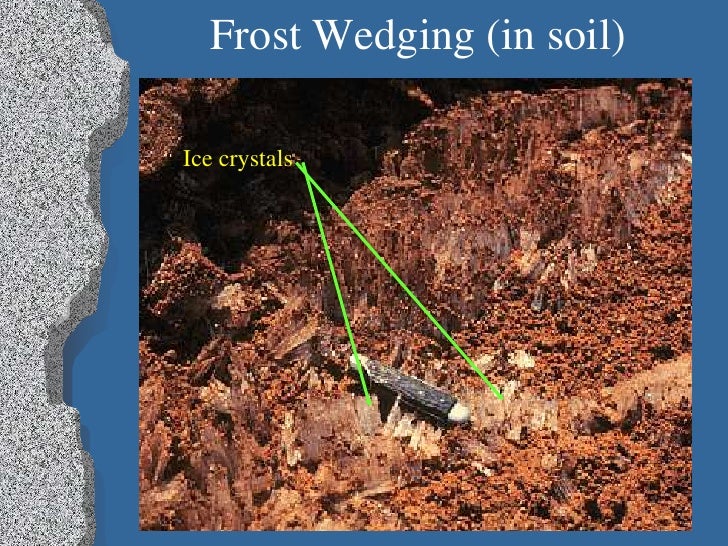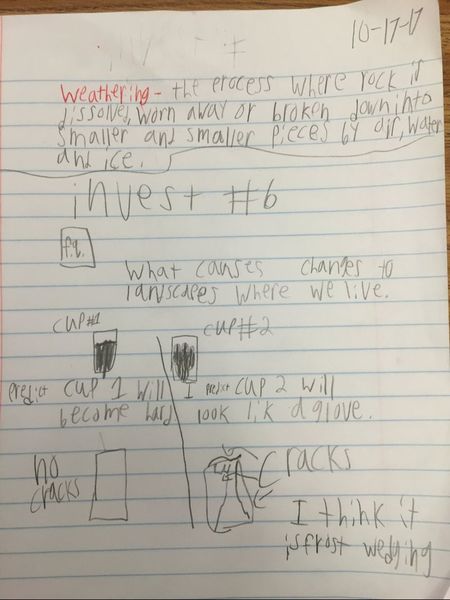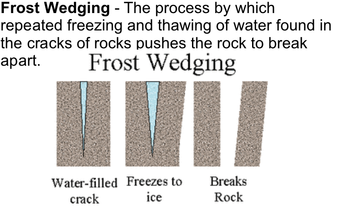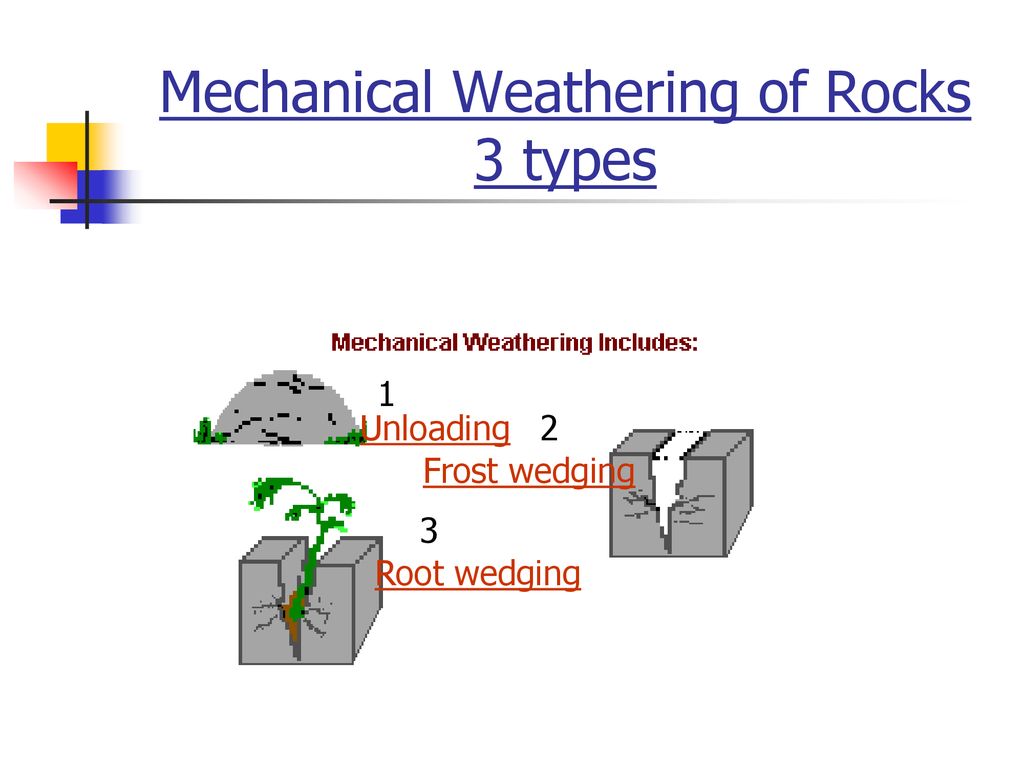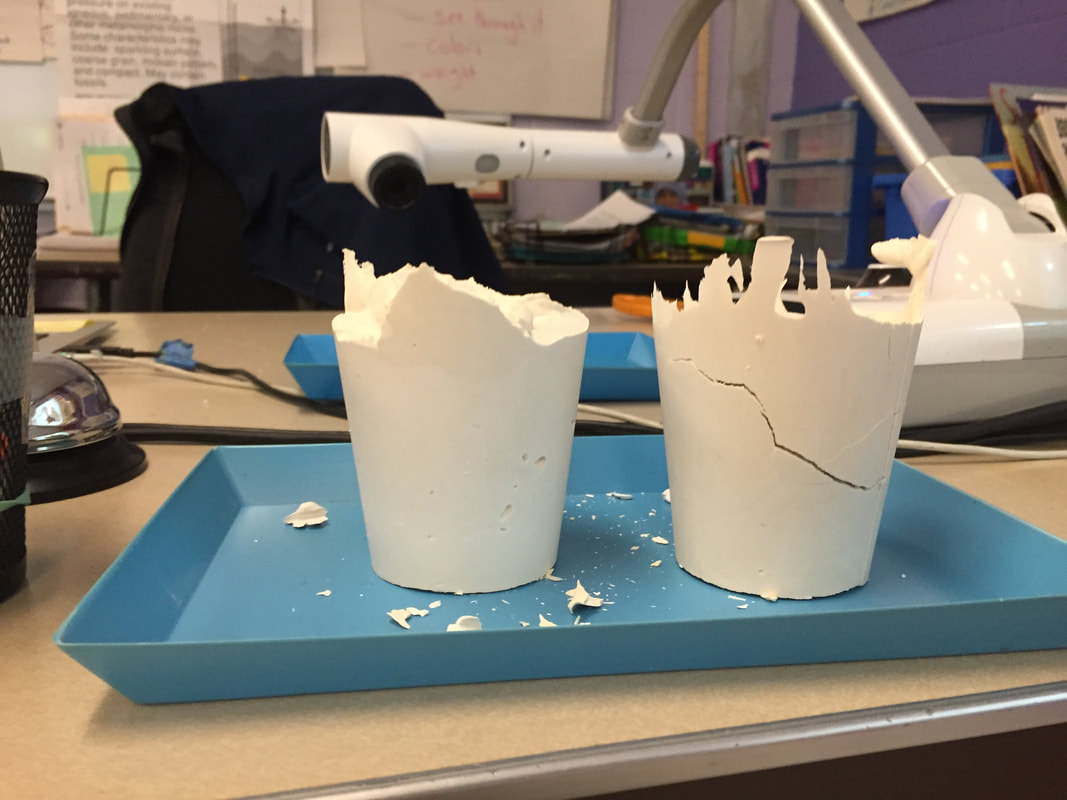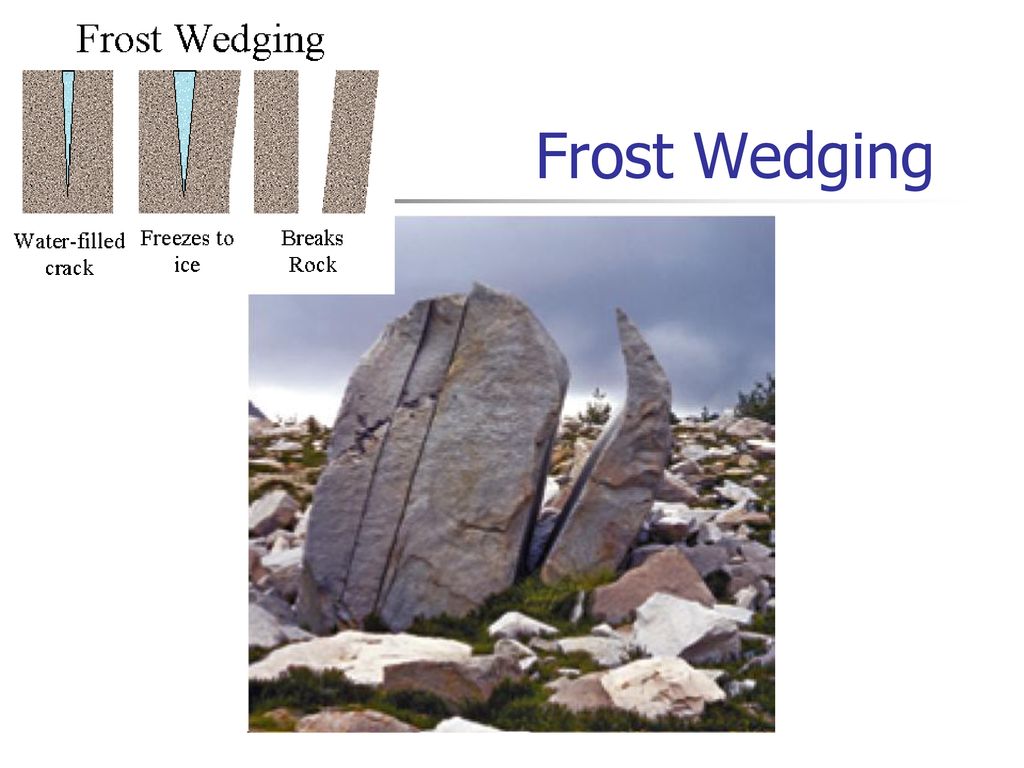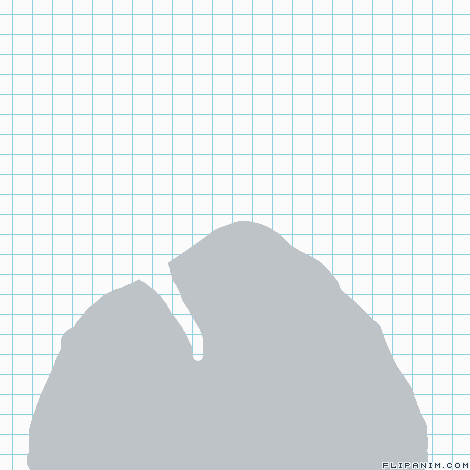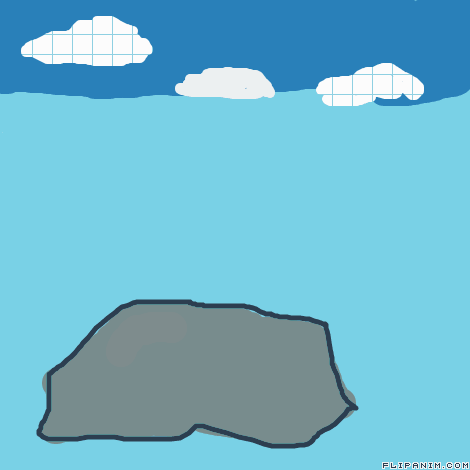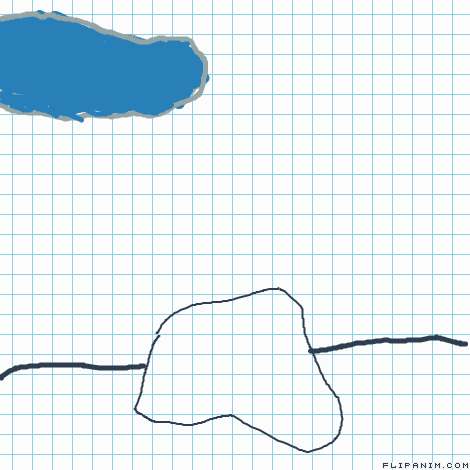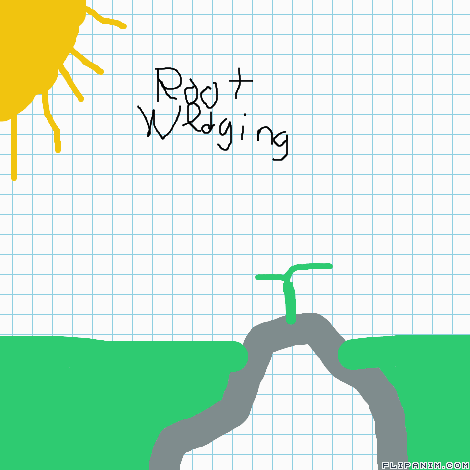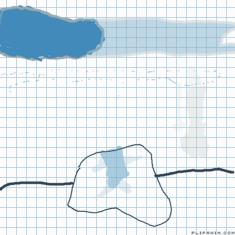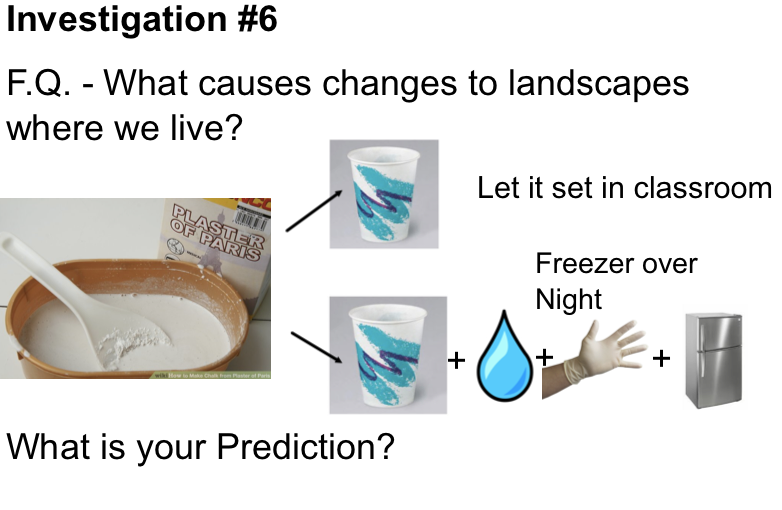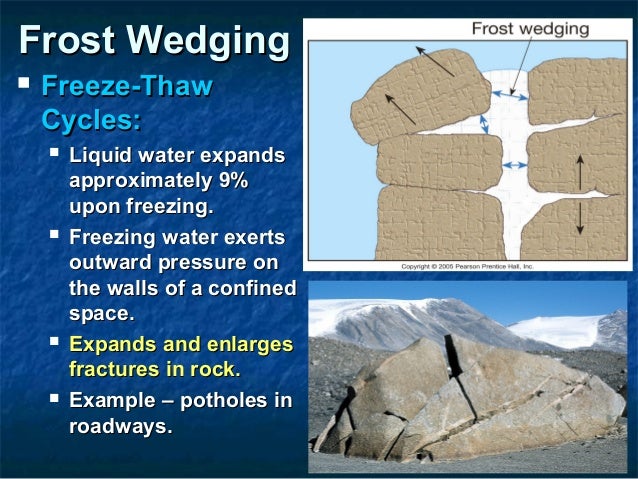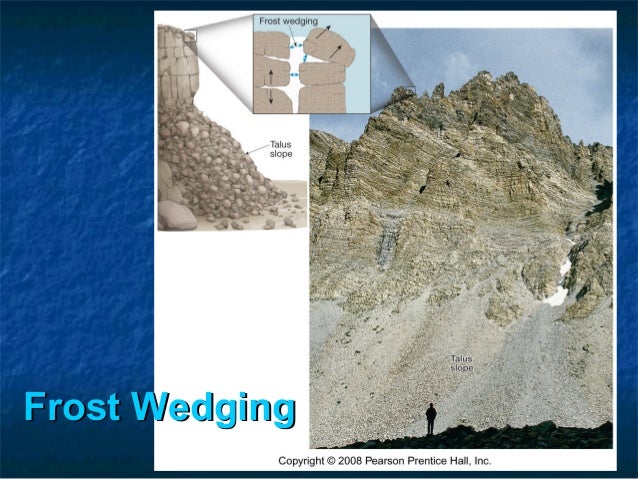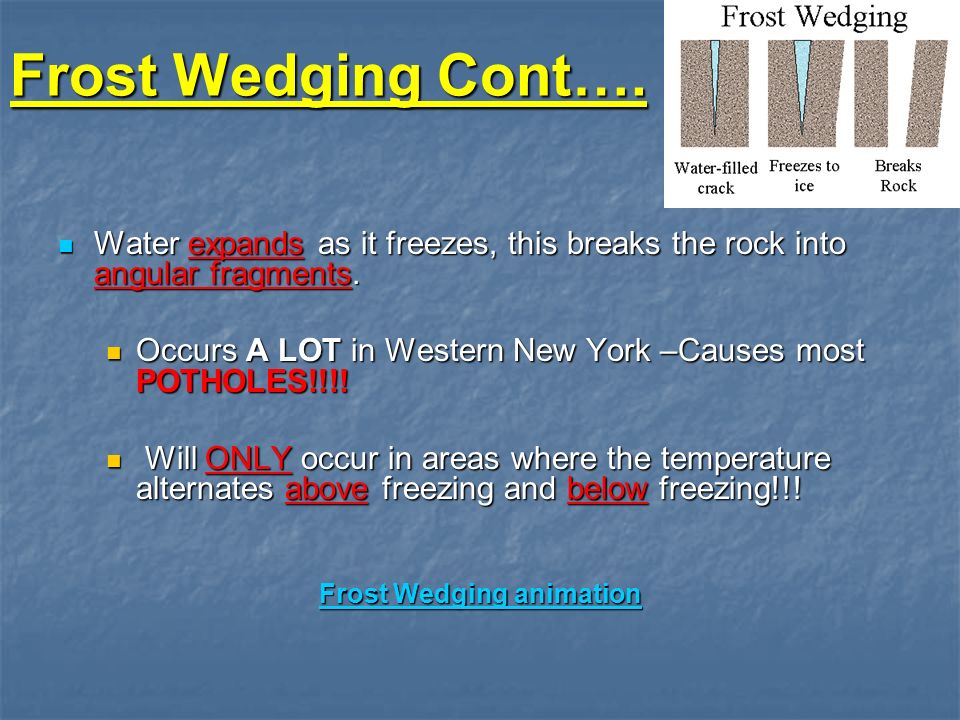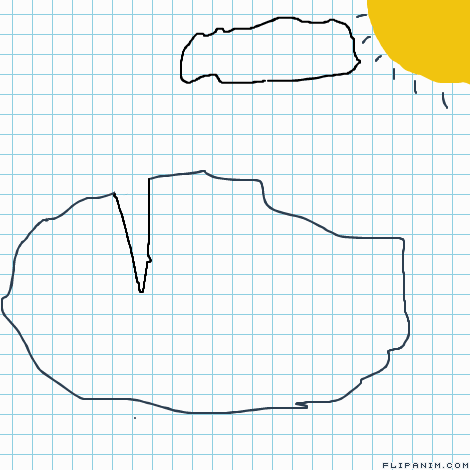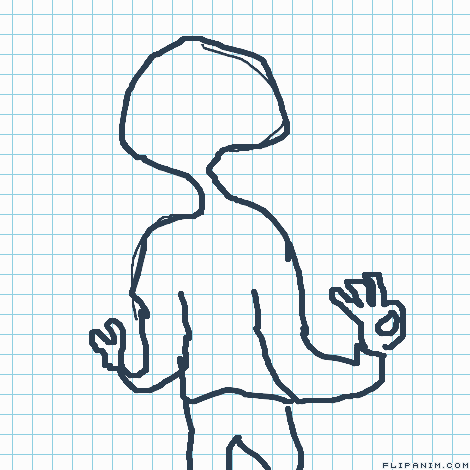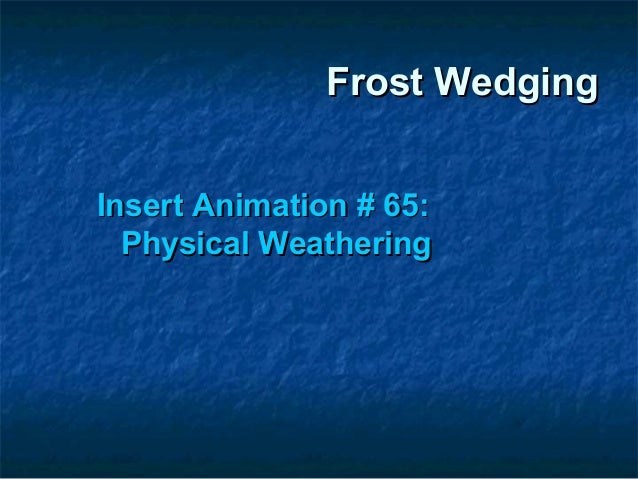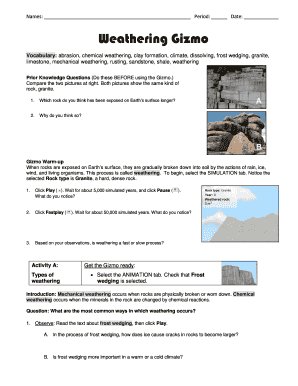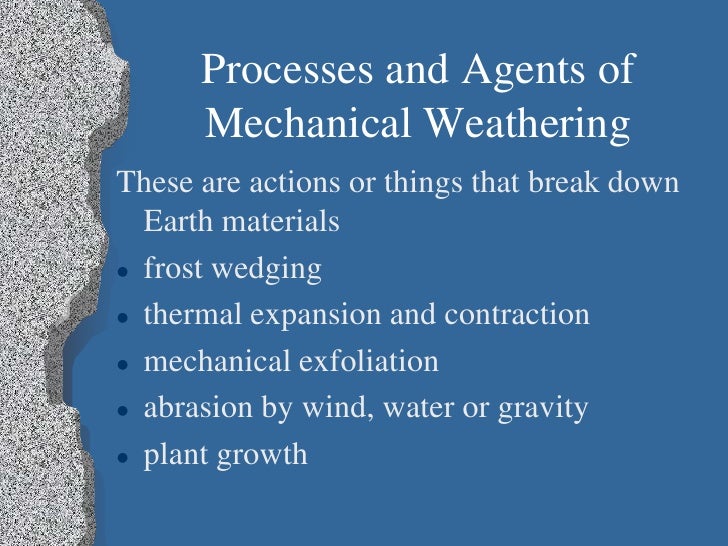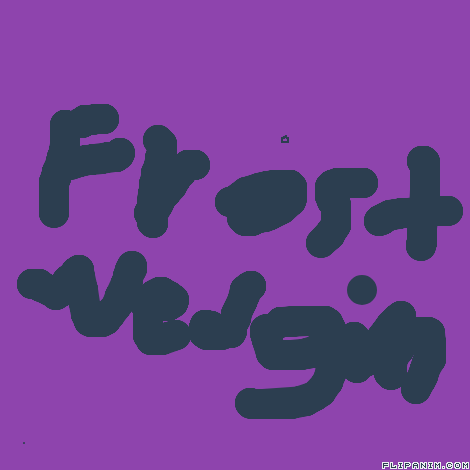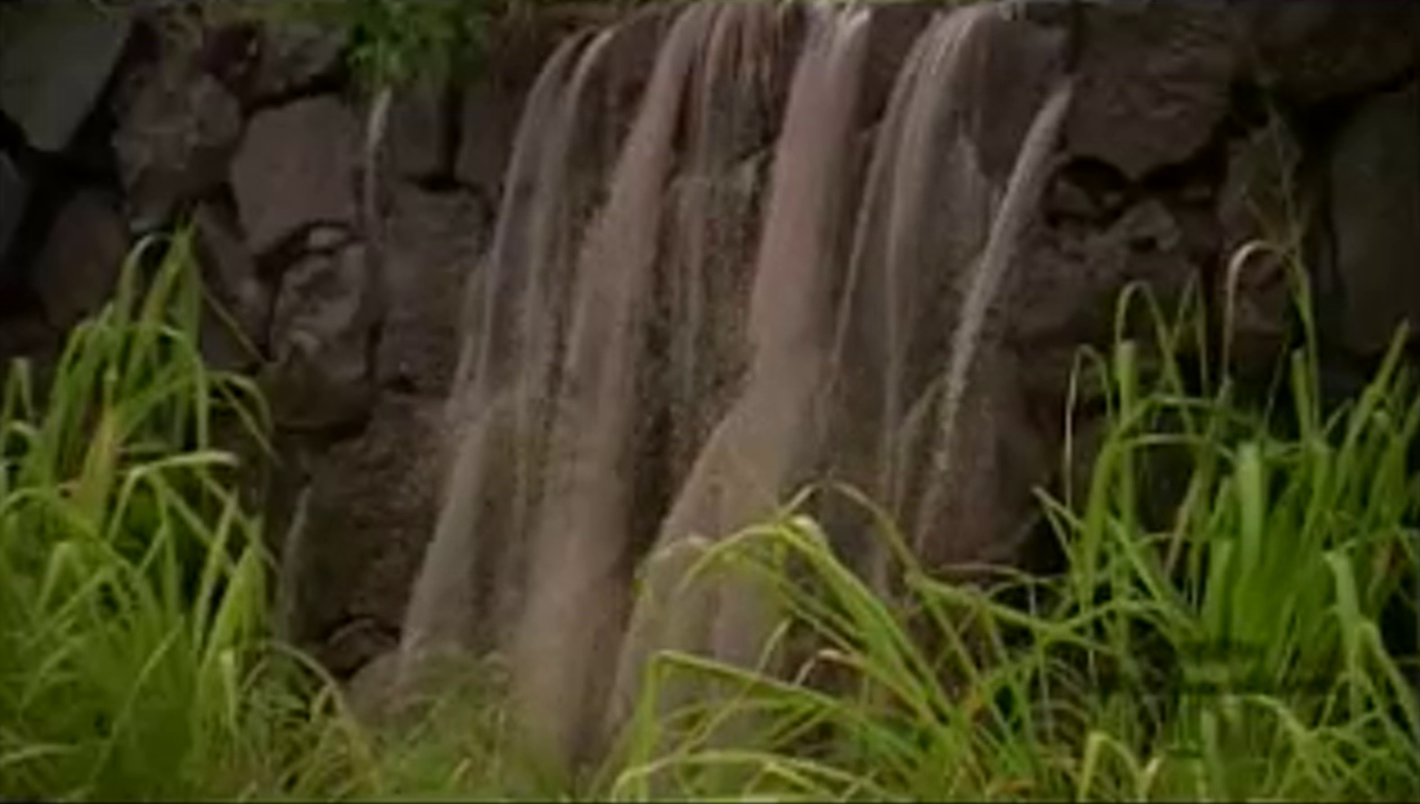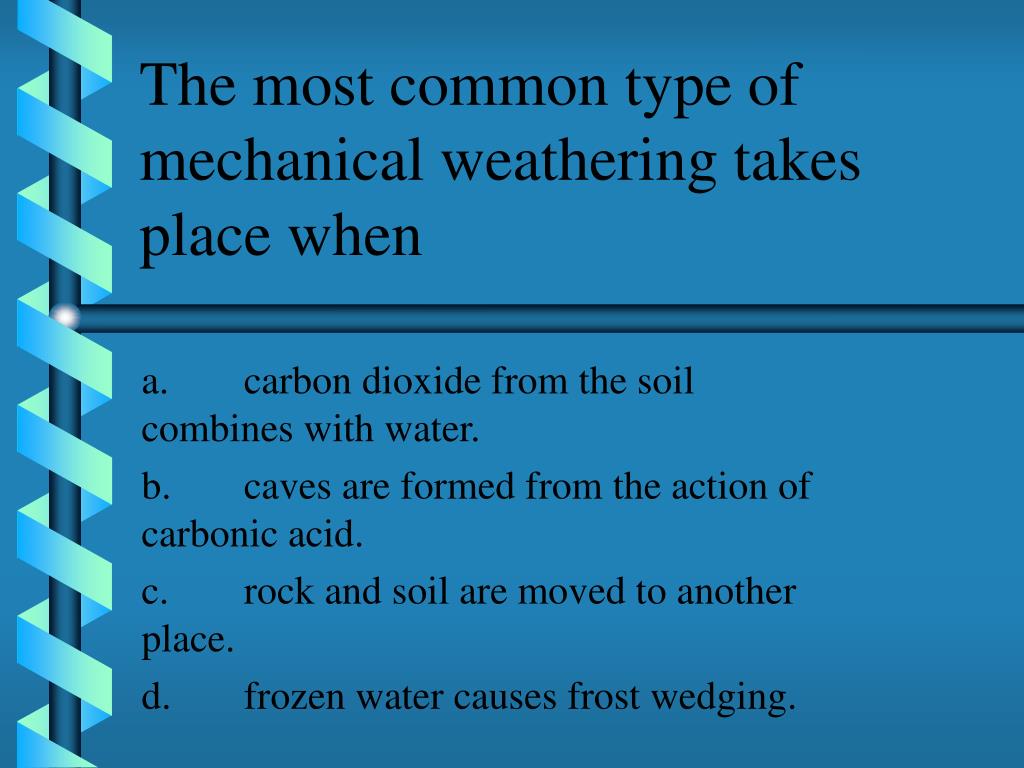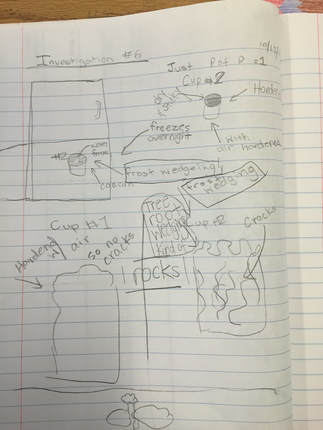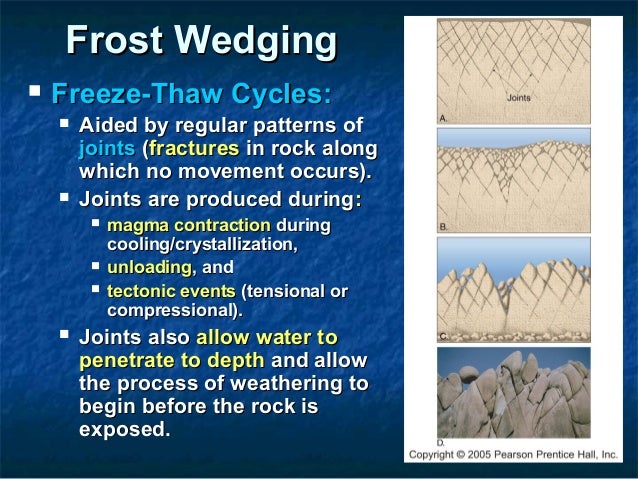Frost Wedging Animation
Click on next to access frost wedging 4.

Frost wedging animation. Frost wedging is widely presumed to be the principal mechanism responsible for shattering jointed low porosity rocks in high alpine rockwalls. Take a look at the animation. Link to this resource in your page using resource 2455. What is exfoliation and what types of rock is it most common in.
Watch the animations and then click on learn more. In what regions do thermal expansion occur most often. Continued rock destruction and removal by these processes will eventually result in windows and hoodoos as the walls and fins become thinner. Click arrows at top of page to mechanical weathering.
The china wall on the fairyland loop trail illustrates this evolution very well. Clicking on each example yields a larger view. A search using weathering yields over 130 images available in 100 700 and 1400 dots per inch resolution. Usgs photo library archive more info.
What are the most common ways in which weathering occurs. Check that frost wedging is selected. Frost wedging and runoff are the two main processes that form walls fins and landforms at bryce canyon national park. Listed are three examples of frost wedging and three examples of root wedging.
Click on freeze it to watch frost wedging in action. Frost wedging to find animation small group work 10 minutes review different science notebook set ups or ways of recording information observations and illustrations. Types of weathering get the gizmo ready. Select the animation tab.
Complete the following fact about water. Small groups discuss pros and cons of different styles or methods. Mechanical weathering occurs when rocks are physically broken or worn down. Captioned slides depict the weathering process and explain how it progresses over time.
The interaction of ice and rock physics regulates the. List and describe 4 forces of erosion here. This site features an animation of periglacial ice wedging. Click on next to access exfoliation 5.
